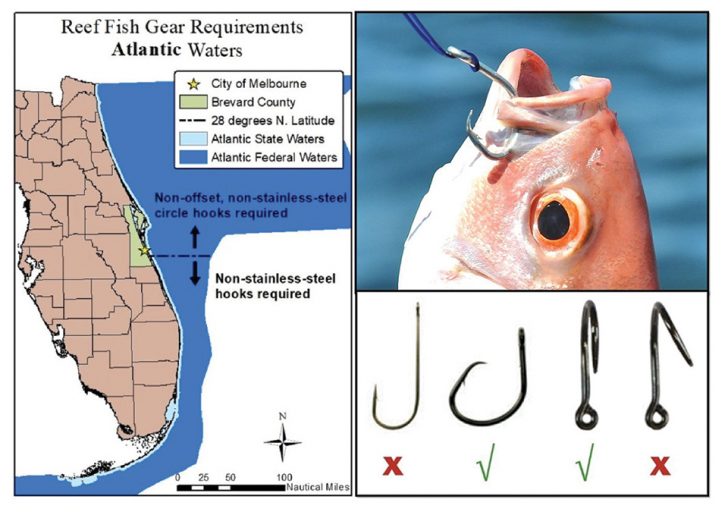
Anglers using hook-and-line with natural bait to target reef fish like snapper or grouper from a vessel in Florida’s Atlantic state waters are now required to use non-stainless steel, non-offset circle hooks north of 28 degrees north latitude (near Melbourne) and non-stainless steel hooks south of 28 degrees north latitude.
These changes are consistent with requirements in Atlantic federal waters that recently took effect and, along with emphasizing best fishing practices through educational resources and strategic messaging, will help conserve fisheries for the future.
Non-stainless steel, non-offset circle hooks are already required when fishing for reef fish in Gulf state waters and have been a successful tool in increasing the number of fish that survive release.
Non-stainless steel hooks degrade faster in the marine environment compared to stainless steel or other non-corrodible metals. Use of these hooks may ultimately improve survival if the line is broken or the hook cannot be removed, and increase a fish’s chance to shed the hook over time. Additionally, non-offset circle hooks more often hook fish in the mouth rather than the gut, which reduces internal harm to the fish and decreases de-hooking time for the angler.
Allowing the use of other types of non-stainless steel hooks south of 28 degrees north latitude accommodates for regionally important south Florida fisheries, such as yellowtail snapper, in which the use of J hooks allows for greater efficiency and reduces discard mortality.
FWC encourages the use of tools such as descending devices and venting tools when barotrauma occurs so long as they do not delay release.
To learn more about proper fish handling techniques,
visit MyFWC.com/FishHandling.